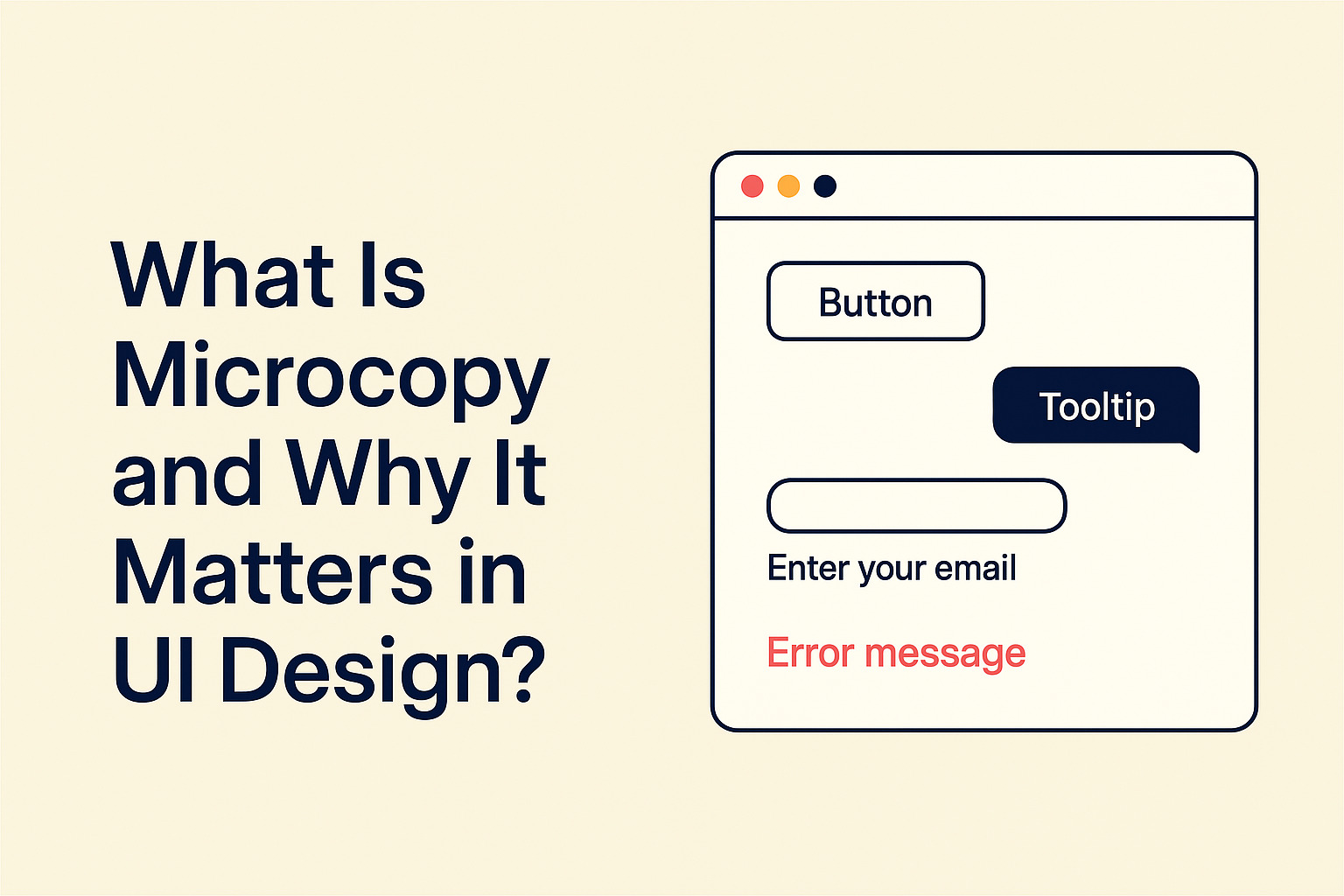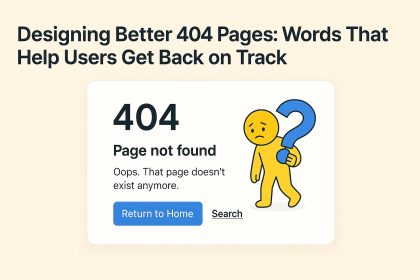Microcopy is the concise text found in user interfaces that guides, informs, and reassures users at critical moments. It appears in buttons, error messages, form instructions, and tooltips. This small piece of writing holds significant power because it shapes user experiences and influences behavior.
Understanding Microcopy
Microcopy is more than just text; it is the voice that communicates a brand’s personality and values. It plays a key role in building trust and reducing user friction. Every word is carefully chosen to guide users through tasks with minimal confusion. Clear microcopy minimizes errors, supports smooth interactions, and provides immediate feedback.
Key elements include:
- Clarity: Each word has a specific role, aiming to remove ambiguity.
- Tone: The tone reflects the brand’s character, making interfaces feel friendly and reliable.
- Brevity: Every sentence is short and purposeful, ensuring users quickly grasp the message.
- Actionability: Clear instructions help users complete actions effectively.
Why Microcopy Matters in UI Design
Microcopy directly impacts the ease with which users interact with software. It reduces hesitation and builds a sense of security by clearly outlining what to expect next. Here are several reasons why microcopy is a vital part of interface design:
- User Guidance:
- It provides instant explanations that clarify next steps.
- Error messages written in a user-friendly tone help reduce frustration.
- Form instructions remove uncertainty, leading to fewer mistakes.
- Brand Voice Consistency:
- It reflects the brand’s identity, creating a consistent experience across the application.
- The right words build a connection between users and the product.
- The voice in microcopy reassures users during complex transactions.
- Efficiency and Speed:
- Short, targeted text allows users to process instructions quickly.
- It streamlines decision-making and speeds up task completion.
- By reducing confusion, microcopy lowers the need for customer support.
- Trust Building:
- Transparent wording fosters an environment of openness.
- Helpful cues during errors build user confidence.
- Clear calls to action encourage engagement without second-guessing.
Tips for Crafting Effective Microcopy
Creating impactful microcopy requires precision and empathy. Consider these actionable tips:
- Know Your Audience:
Understand the users’ language and preferences. Research demographic profiles to ensure tone and vocabulary resonate well with them. - Focus on the User’s Journey:
Map out user flows to determine where clear guidance is necessary. Identify potential pain points and use microcopy to ease transitions. - Keep It Simple:
Use straightforward language that is easy to understand. Avoid technical jargon that might confuse new users. - Test and Iterate:
Regularly review user interactions to identify areas for improvement. Use A/B testing to compare different approaches and select the one that performs best. - Be Consistent:
Maintain uniformity in tone and terminology across all microcopy. Consistency reinforces brand identity and minimizes misunderstandings.
Real-World Applications
Consider a checkout process in an online store. Microcopy in this scenario can:
- Explain next steps: Clear instructions on what happens after the purchase are essential.
- Confirm actions: A simple message stating “Your order has been placed” reassures the buyer.
- Offer assistance: Quick links to support resources help users resolve issues without delay.
Similarly, when errors occur during form submissions, microcopy can instantly reassure users. A message like “Please check the highlighted fields” provides guidance without placing blame, allowing users to correct mistakes swiftly.
The Impact on User Engagement
Effective microcopy transforms user experiences by making interactions smooth and predictable. Users feel understood when instructions are direct and language is tailored to their needs. This leads to increased confidence and fewer mistakes. Clear microcopy not only boosts user satisfaction but also improves overall product performance by reducing the number of support inquiries.
In summary, microcopy is a vital tool in user interface design. It is the small, yet powerful text that smooths the path for every user interaction. The focus on clarity, consistency, and empathy helps bridge the gap between user expectations and actual experiences. By investing in well-crafted microcopy, designers create interfaces that are not only functional but also engaging and reassuring.




